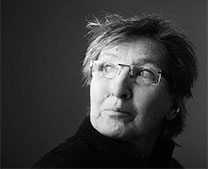The fourth film to be shown at the unique festival in Belgrade, starting this coming saturday, under the subtitle “European feature documentaries”, organised by Svetlana and Zoran Popovic and their team, and with me taking part in the selection is
WORLDSTAR
A young German author, impressed by photographs of a Czech photographer, goes with his friend’s recommendation to visit him. She was welcomed with a combination of the worst rude words. So it all began. This is a film about an old man with no needs and a remarkable past, facing the hype as an artist against his will. There isn’t any important city in the world where his unusual work hasn’t been exibhited. In this very moment some of the leading metropolis’ galleries are exhibiting, for amazed visitors, the photographs taken with the strangest camera ever made. But, while in the art circles worldwide his photos cost up to 12 000 Euros, Miroslav Tichý lives alone in an old, waste house, isolated from the world, surrounded with only a few friends. “They should have come earlier, now it’s too late.” – he said refusing to talk about the fame. The German director Nataša von Kopp discovers for us the new “Tichý Ocean” in the middle of Europe in the begining of 21st century.
www.worldstar.sleeping-tiger.com
MY WORDS: “What a character! He is around 80 years old, and there he sits, Miroslav Tichý, a brilliant photographer, who does not want to take part in all the fuss around him being a génial artist. The gallery owners and the art critics come to his room, where he sits drinking his beer and slivovica, they ask him all kind of clever questions to his work. He doesn’t give a damn. The young female filmmakers, however, have succeeded to be there and to make him talk to them, and thus to us. Thanks to that, it’s great fun to be with him. This film is full of talent!”
More about film and festival at
www.magnificent7festival.org


